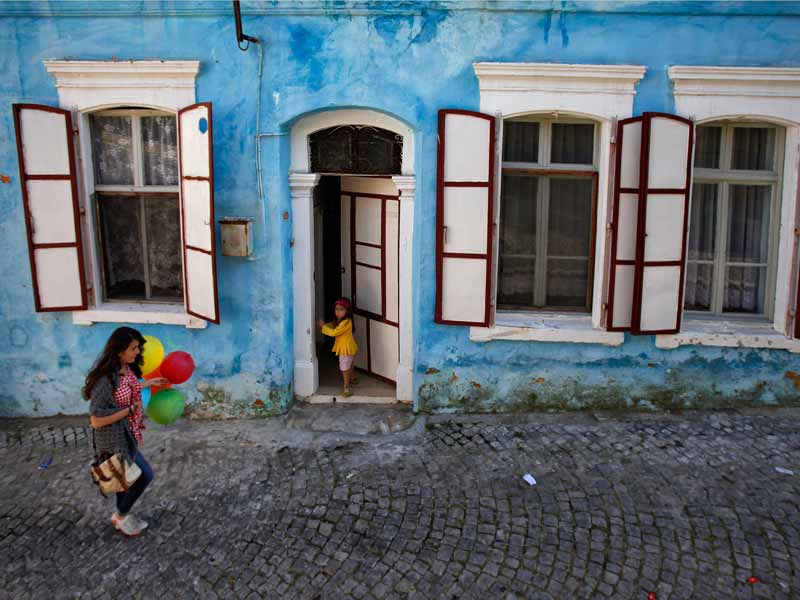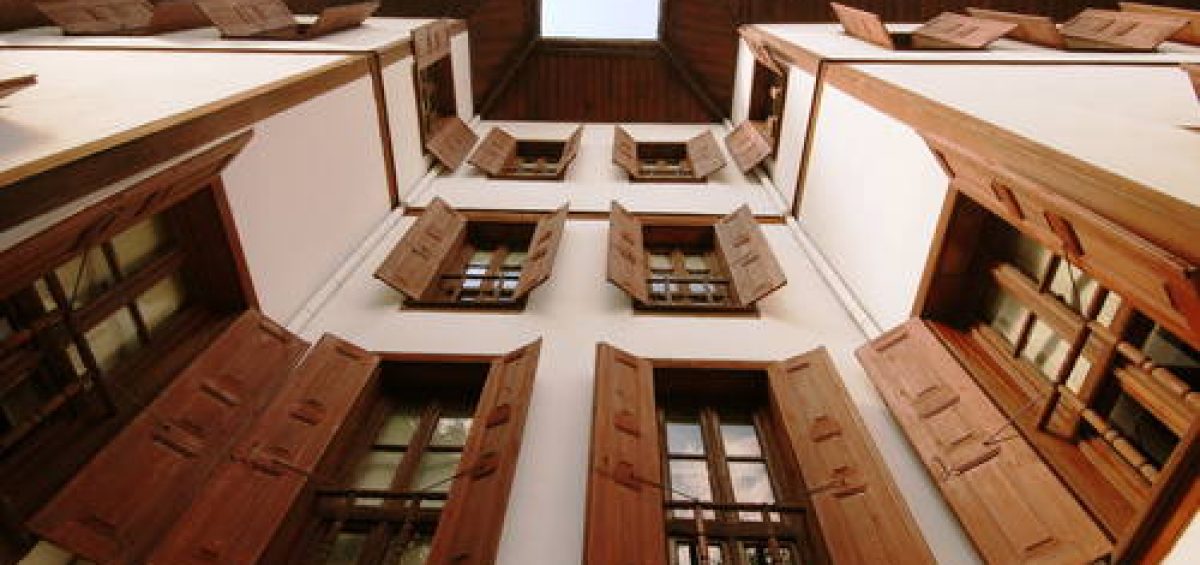Other 8 Worth to Discover UNESCO Sights in Turkey!
Lets keep going with the list of the UNESCO sites in Turkey, to be sure you won’t miss any of these incredible sites.
How many of those have you visited already?
Great Mosque & Hospital of Divriği - UNESCO
This region of Anatolia was conquered by the Turks at the beginning of the 11th century. In 1228–29 Emir Ahmet Shah founded a mosque, with its adjoining hospital, at Divrigi. The mosque has a single prayer room and is crowned by two cupolas. The highly sophisticated technique of vault construction, and a creative, exuberant type of decorative sculpture – particularly on the three doorways, in contrast to the unadorned walls of the interior – are the unique features of this masterpiece of Islamic architecture.

Neolithic Site of Çatalhöyük - UNESCO
Çatalhöyük is known as one of the earliest settlements in the Neolithic age, located in Cumra district of Konya. It is the largest and best-preserved Neolithic site found to date. There are no footpaths or streets between dwellings, so rooftops were their streets. Çatalhöyük tells us how humans made the transition to settled life and started farming. It is one of the best sites representing early societies. The taller eastern mound contains eighteen levels of Neolithic occupation between 7400 – 6200 BC, including wall paintings, reliefs, sculptures and other symbolic and artistic features. Together they testify to the evolution of social organization and cultural practices as humans adapted to a sedentary life. Neolithic Site of Çatalhöyük provides important evidence of the transition from settled villages to urban agglomeration, which was maintained in the same location for over 2000 years. It features a unique street less settlement of houses clustered back to back with roof access into the buildings.

Pergamon and its Multi-Layered Cultural Landscape - UNESCO
Pergamon has been one the rare settlements that has survived several invasions and devastations over the ages, but reoccupied again on the merits of its strategic location. As confirmed by the findings of the excavations held, prehistory of Pergamon reaches back to second millennia BC. The city survived Persian domination and conquest of Alexander the Great. The most brilliant phase of its history lasted almost one hundred and fifty years when it was the capital of the Kingdom of Pergamon during 3rd and 2nd centuries BC. At this time, one of the largest libraries of the world was built here and the city became a healing centre. The arts also flourished, and the city particularly became renowned for magnificent sculptures. During the Roman period, Pergamon maintained its significance and developed further becoming “the most famous and magnificent city of the Asia Minor”, as described by the 1st century AD philosopher and author Pliny the Elder. Visiting Bergama would provide you a chance to trace the steps of the ancient city Pergamon through several unique experiences.

Bursa & Cumalıkızık (The Birth of The Ottoman Empire) - UNESCO
Located on the slopes of Uludağ Mountain in the north-western part of Turkey, Bursa and Cumalıkızık represent the creation of an urban and rural system establishing the first capital city of the Ottoman Empire and the Sultan’s seat in the early 14th century. In the empire’s establishment process, Bursa became the first city, which was shaped by kulliyes, in the context of waqf (public endowments) system determining the expansion of the city and its architectural and stylistic traditions. The specific development of the city emerged from five focal points, mostly on hills, where the five sultans (Orhan Ghazi, Murad I, Yıldırım Bayezid, Çelebi Mehmed, Murad II) established public kulliyes consisting of mosques, madrasahs (school), hamams (public baths), imarets (public kitchens) and tombs. The exceptional city planning methodology is expressed in the relationship of the five sultan kulliyes, one of which constitutes the core of the city’s commercial centre, and Cumalıkızık which is the best preserved waqf village in Bursa.

Diyarbakır Fortress & Hevsel Gardens Cultural Landscape - UNESCO
The Diyarbakır Fortress and Hevsel Gardens Cultural Landscape is located on an escarpment in the Upper Tigris River Basin. The fortified city with its associated landscape has been an important centre and regional capital during the Hellenistic, Roman, Sassanid and Byzantine periods, through the Islamic and Ottoman periods to the present. The property includes the impressive Diyarbakır City Walls of 5800 metres – with its many towers, gates, buttresses and 63 inscriptions from different historical periods; and the fertile Hevsel Gardens that link the city with the Tigris River and supplied the city with food and water. The City Walls, and the evidence of their damage, repair and reinforcement since the Roman period, present a powerful physical and visual testimony of the many periods of the region’s history. The attributes of this property include the İçkale (Inner Castle), Diyarbakır City Walls (known as the Dişkale or Outer Castle), including its towers, gates and inscriptions, the Hevsel Gardens, the Tigris River and Valley, and the Ten-Eyed Bridge.

Archaeological Site Of Ani - UNESCO
Situated on the eastern border of Turkey, across the Akhurian River from Armenia, lies the empty, crumbling site of the once-great metropolis of Ani, known as “the city of a thousand and one churches.” Founded more than 1,600 years ago, Ani was situated on several trade routes, and grew to become a walled city of more than 100,000 residents by the 11th century. In the centuries that followed, Ani and the surrounding region were conquered hundreds of times — Byzantine emperors, Ottoman Turks, Armenians, nomadic Kurds, Georgians, and Russians claimed and reclaimed the area, repeatedly attacking and chasing out residents. By the 1300s, Ani was in steep decline, and it was completely abandoned by the 1700s. Rediscovered and romanticized in the 19th century, the city had a brief moment of fame, only to be closed off by World War I and the sad events that followed. Now Ani is once again being renovated, open for visitors.

Aphrodisias - UNESCO
The temple to Aphrodite dates to the 3rd century BCE; and the city was founded in the 2nd century BCE as part of an urban expansion of Hellenistic culture in southwestern Anatolia. The city’s wealth came from the marble quarries and the art produced by its sculptors; and the city is elaborately decorated. A grid of city streets is set around several large civic structures including temples, a theatre, an agora, a council house and two bath complexes. A city wall surrounds the whole, made of reused marble blocks. Marble quarries are situated on a hill north of the city, two to three kilometres to the northeast. These were the source of the stone used to build the city and to carve sculptures in the workshops. The temple was made into a church around 500 CE; but the city’s population declined, and it was abandoned in the 14th century.

Göbekli Tepe - UNESCO
Located in the Germuş mountains of south-eastern Anatolia, this site presents monumental circular and rectangular megalithic structures, interpreted as enclosures, which were erected by hunter-gatherers in the Pre-Pottery Neolithic age between 9,600 and 8,200 BC. It is likely that these monuments were used in connection with rituals, probably of a funerary nature. Distinctive T-shaped pillars are carved with images of wild animals, providing insight into the way of life and beliefs of people living in Upper Mesopotamia about 11,500 years ago.




